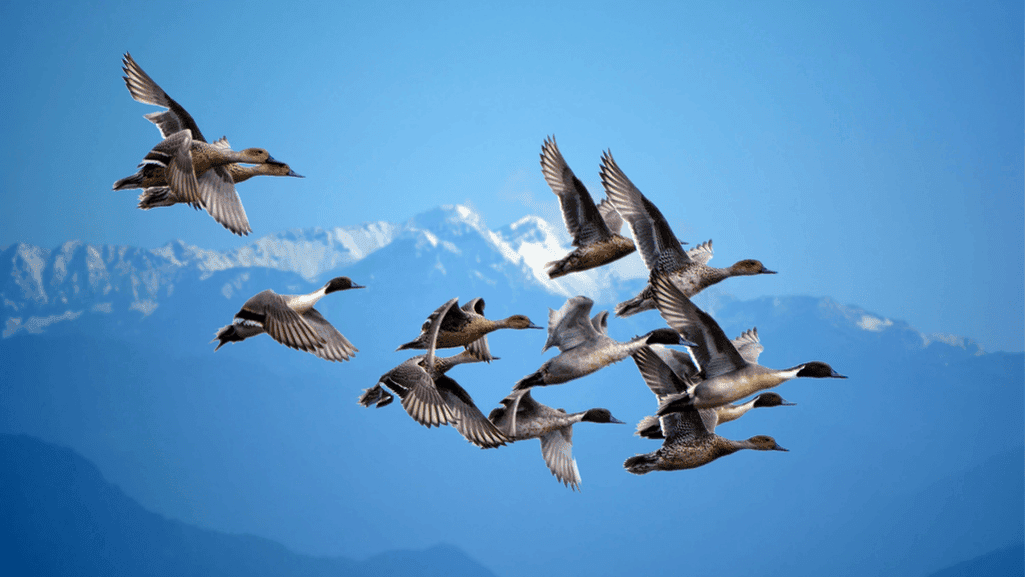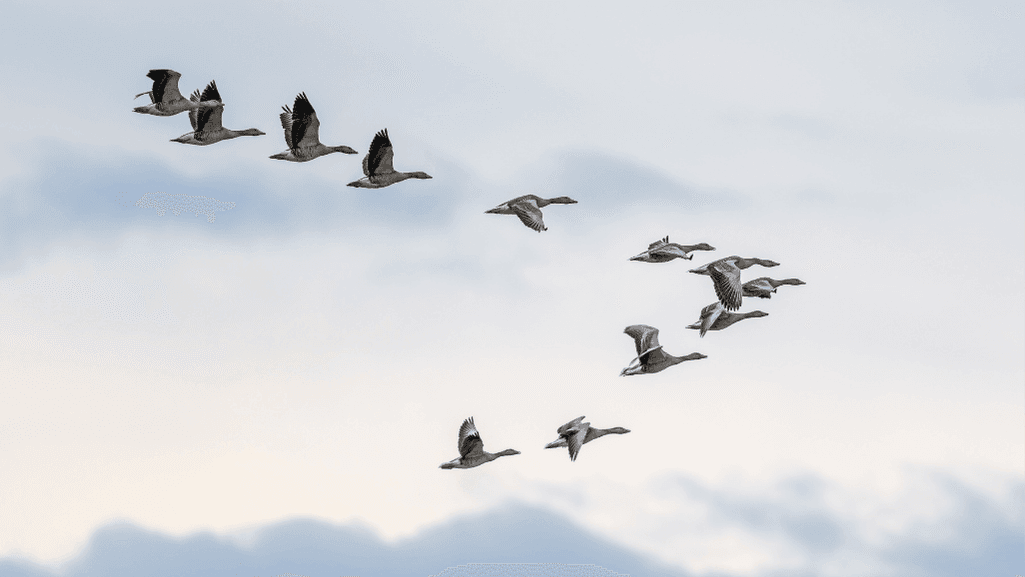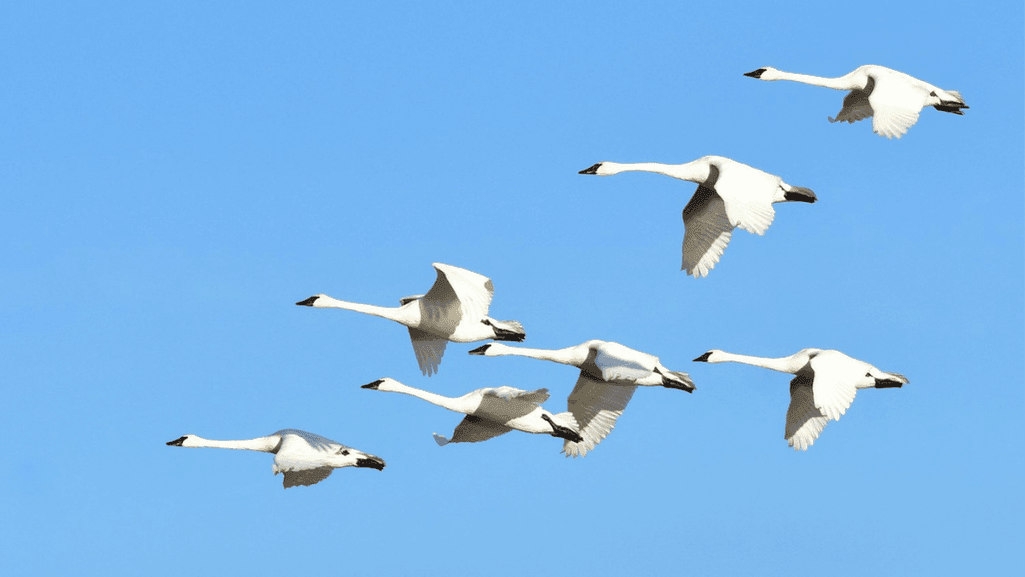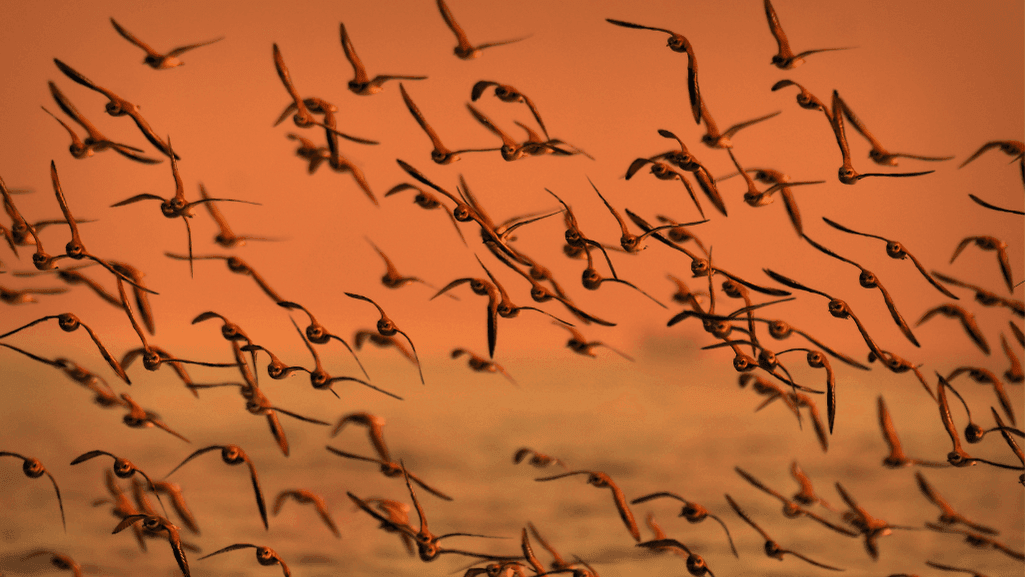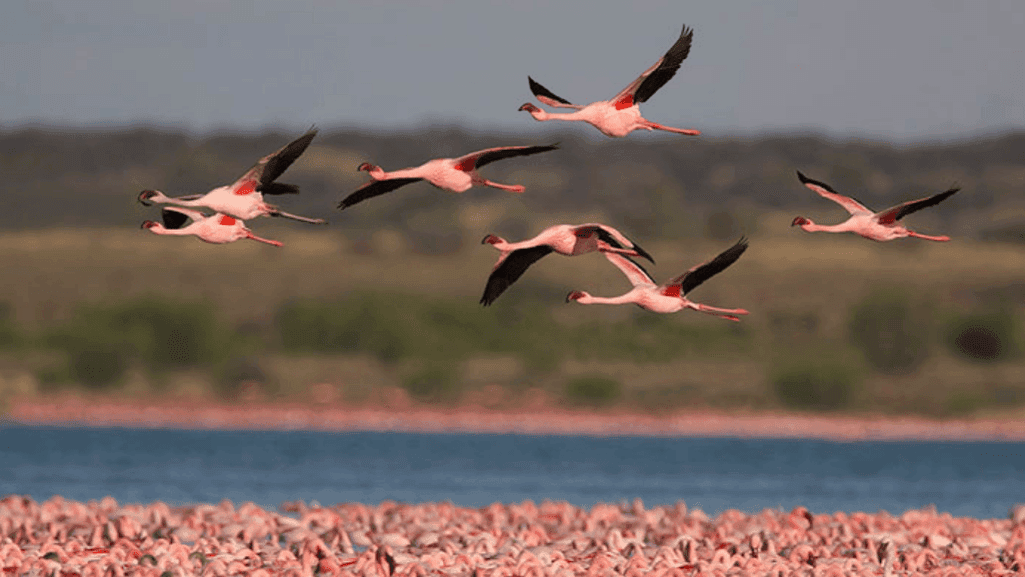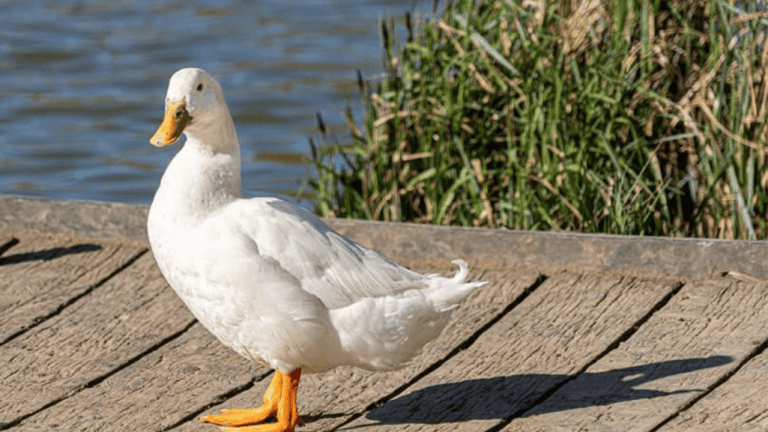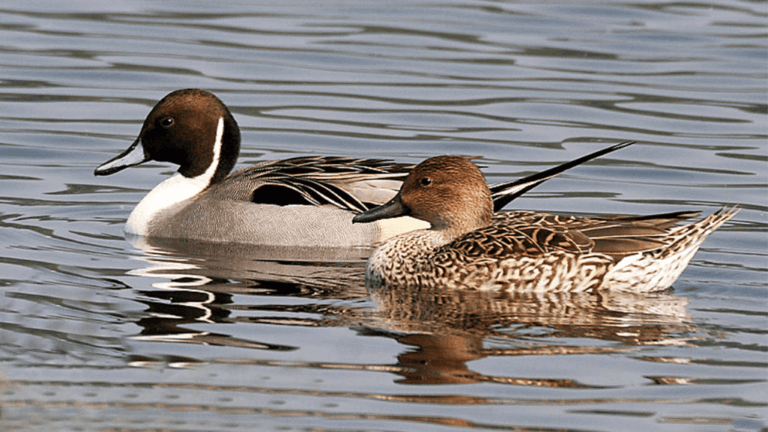As spring arrives, the sight of bird species migration is truly awe-inspiring. Geese of different kinds travel long distances across continents. A detailed migratory flyways map is key for those studying, protecting, and loving these birds.
The network of goose migratory routes is vast and complex. It includes the Flyways of North America, where species like the Snow Goose and Canada Goose roam. These routes are managed by Councils in the Atlantic, Mississippi, Central, and Pacific areas. They work together, guided by the U.S. Fish & Wildlife Service, to watch over these birds on their journeys.
Key Takeaways
- The role of migratory flyways maps is vital for tracking and managing bird species migration.
- Goose migratory routes are central to the conservation acts formulated by North American Flyway Councils.
- Efforts by various state and federal authorities ensure the protection and sustainability of geese populations during migration.
- Consistency in data and habitat evaluation by biologists informs policies aimed at the welfare of geese along different flyways.
- Each Council manages a network of key habitats essential for geese during their treks—information that is visually represented on a migratory flyways map.
- The collaborative approach of these administrative Flyways ensures a level of stewardship that benefits both the geese and the ecosystems they influence.
Understanding Migratory Flyways
As autumn arrives, many birds start their long journeys along migratory bird pathways. These paths are key for birds to travel between their summer and winter homes.
These avian migratory corridors are found worldwide. Places like the North American flyways are famous for their beauty and the need to protect them. For more information, check out North American bird flyways online.
What Are Migratory Flyways?
Migratory flyways are like highways in the sky for birds. They follow natural paths that help birds find the best places to live and survive.
Importance of Flyways for Geese
For geese, these paths are essential for their life cycle. They need places like wetlands and grasslands to rest and get ready for their next journey. Keeping these paths safe is vital for their survival.
Key Factors Influencing Migration
Many things can change these paths. Weather changes and human activities like building cities and farms can harm habitats. Flyway planning tools are important for tracking and protecting these paths.
These tools help us understand and help the birds. By protecting key places, we can make their journey safer. This way, we can help these amazing birds continue their ancient travels.
Healthy flyways are good for birds and the environment. With better flyway planning tools and teamwork, we can keep the skies open for these incredible birds.
Overview of Major Goose Species
North America is home to many goose species. Each has its own migration patterns and likes when it comes to where they live. The Canada Goose is famous for flying in a V shape and living in many places.
Common Species in North America
Goose populations in North America are diverse. The Canada Goose, with its black head and white ‘chinstrap,’ is one of the most common. They can be found in places from the Atlantic to Pacific flyways. This shows how well they adapt to different environments.
Unique Migration Patterns
Goose migration patterns in North America are complex. For example, light geese like Snow Geese and Ross’s Geese have special ways of migrating. They now eat in fields, not just wetlands. This shows how they can change to survive.
This change is important for their survival. It also shows we need to protect their habitats. Groups like the US Fish and Wildlife Service and Ducks Unlimited help with this.
Habitat Preferences During Migration
Goose species have specific places they like to stop during migration. These places are key for their survival and to have babies. For example, the Blackwater National Wildlife Refuge in Maryland is a big stop for Canada Geese each fall.
Understanding goose migration patterns helps us see why we need to protect their paths. Efforts like those on Ducks New World are vital. They help ensure many bird species can survive as the world changes.
Studying goose habitats and migration helps us learn more about nature. It shows us the importance of bird migration for our planet.
The Geographic Landscape of Goose Migration
Looking at the bird migration map shows us the complex paths and key spots that guide geese. These paths are vital for the health of birds during their long journeys. They are full of life and are key for the survival of many bird species.
Identifying Key Areas on the Map
To protect birds and enjoy birdwatching, we need to find important spots on the bird migration map. These places have lots of water and green plants. They are perfect for birds to rest, eat, and drink.
Essential Stopover Sites
Stopover sites are key for successful migrations. They give birds a break and a chance to refuel. By knowing these places, we can help protect them. This keeps these important areas safe for birds.
Regional Differences in Migration Paths
Migration paths change based on where you are. For example, paths over the Rockies are different from those over the Great Plains. Each path shows how birds adapt to their surroundings. Learning about these differences helps us understand bird migration better.
Using detailed bird migration maps helps both bird lovers and conservationists. It helps keep bird populations healthy. This way, we make sure future generations can enjoy watching geese migrate.
Creating Effective Migratory Flyways Maps
Making migratory flyways maps helps conservationists and teaches the public about bird journeys. They use flyway planning tools and bird migration map resources to share important data. These tools show the paths birds take between habitats, which are key for their survival.
Tools and Technologies for Mapping
Good maps start with the right tools. Geographic Information Systems (GIS) are key, showing spatial data and migration patterns. They mix bird tracking data with environmental info, giving a clear view of migration paths.
Technologies like radio and satellite tracking are also important. They show birds’ exact movements, helping us understand their journeys better.
Data Collection Methods
The quality of data affects map accuracy. Bird banding, radio telemetry, and satellite imagery give detailed bird location and movement data. For example, tracking devices on birds reveal migration timing, stopover lengths, and route choices.
Understanding Flyway Map Legends
A map’s legend is vital. It explains the map’s details, like route density and key stopovers. It’s important for those in conservation and education to grasp these legends. Legends should clearly show different paths and highlight important areas like breeding or feeding grounds.
In summary, making good migratory flyways maps requires advanced tech, careful data collection, and clear communication. These maps are key for bird conservation, helping ensure migratory species survive their global journeys.
Seasonal Migrations and Their Implications
Every year, geese migrate with amazing precision. This is thanks to instinct and the need to survive. Environmental changes and the climate influence on bird migration play big roles. They affect when, how long, and where geese travel.
Timing and Duration of Goose Migrations
Geese migrations start in early spring. They use good weather to save energy. When winter comes, they head back to warmer places.
The length of their journey changes. It depends on how far they go and what they sense around them.
Environmental Changes Affecting Migration
Geese watch for changes in temperature, food, and daylight. These changes tell them when to migrate and how fast. Weather and habitat changes can greatly affect their paths.
The Role of Climate in Migration Patterns
Climate changes affect geese migrations a lot. Changes in weather and habitats can shift where geese find food and breed. This makes them change their routes or times.
Learning about these migrations helps us understand nature better. It also helps us protect their habitats. We must consider how climate change affects their migration routes.
Conservation Efforts for Migratory Birds
The world’s conservation efforts for migratory bird preservation are more important than ever. We face big challenges that threaten these vital species and their homes. Protecting biodiversity is key to keeping bird species migration routes safe.
Importance of Protecting Flyways
Flyways are the air paths birds use during their seasonal moves. They are vital corridors that need to be saved. Keeping these routes safe helps maintain biodiversity and supports the health of bird species migration.
Major Conservation Organizations
- American Bird Conservancy
- BirdLife International
- The National Audubon Society
These groups are leading in conservation efforts. They focus on key habitats, gather resources, and spread the word. Their work protects flyways, which are essential for migratory birds.
Policies and Initiatives Supporting Geese
Many policies and initiatives are in place to protect migratory bird preservation. These include restoring habitats, legal protections, and international agreements. The Migratory Bird Treaty Act is one example, working with countries to safeguard migratory routes.
The conservation efforts in the Lake Erie basin play a critical role in preserving the survival of migrating birds, impacting biodiversity and the ecosystem in the region.
These conservation efforts have far-reaching benefits. They help stabilize ecosystems, which rely on birds for pollination and seed dispersal.
How to Use the Migratory Flyways Map Effectively
For birdwatchers and nature lovers, a migratory flyways map is like a treasure map. It shows how birds travel. Studies on bird migration patterns have over 11,000 accesses and 62 citations, showing their importance.
To use a flyways map well, you need to know about migration intensity scales. These scales show how many birds are moving. Also, look for stopover points, where birds rest during their long trips. Research on bird migration has a big impact, with an Altmetric score of 3.
Tips for Birdwatchers and Enthuasiasts
Understanding bird migration patterns is more than just looking at a map. Knowing about habitats and species is key. Over 45% of the world’s population lives near the East Asian-Australasian Flyway, which has many waterfowl species.
Identifying key geographic features helps predict bird movements. This makes birdwatching more exciting. But, birdwatching also shows us how our actions affect the environment.
Educating Others About Migration
Education is vital for conservation. The amazing journeys of migratory birds need to be shared. Every chance to talk about birds helps raise awareness of their importance.
Birds play a big role in keeping ecosystems balanced. Wetlands, for example, support many species and help humans too. The Asia-Pacific Migratory Waterbird Conservation Strategy, started in 1996, shows our commitment to protecting these journeys.
Participating in Citizen Science Programs
Citizen science is key to protecting bird migration patterns. It lets everyone help collect data. With over 550 satellite transmitters on waterfowl, you can join big monitoring efforts.
Every observation is important, even with limited resources. National wildlife refuges need more funding and staff. By joining citizen science, you become part of a community pushing for change.


